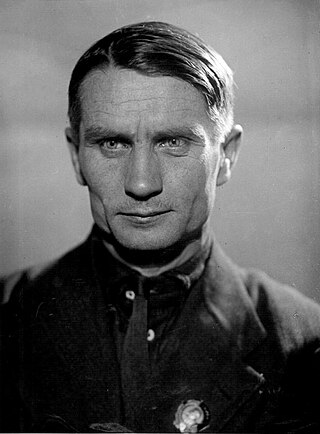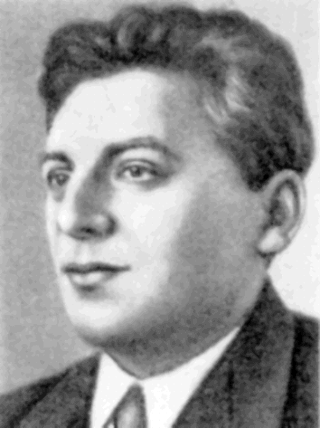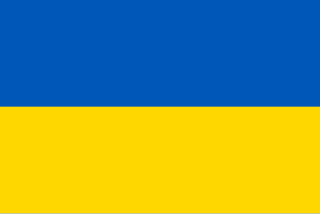
Stalinism is the totalitarian means of governing and Marxist–Leninist policies implemented in the Soviet Union (USSR) from 1927 to 1953 by dictator Joseph Stalin and in Soviet satellite states between 1944 and 1953. Stalin had previously made a career as a gangster and robber, working to fund revolutionary activities, before eventually becoming General Secretary of the Soviet Union. Stalinism included the creation of a one man totalitarian police state, rapid industrialization, the theory of socialism in one country, forced collectivization of agriculture, intensification of class conflict, a cult of personality, and subordination of the interests of foreign communist parties to those of the Communist Party of the Soviet Union, which Stalinism deemed the leading vanguard party of communist revolution at the time. After Stalin's death and the Khrushchev Thaw, a period of de-Stalinization began in the 1950s and 1960s, which caused the influence of Stalin's ideology to begin to wane in the USSR.

Trofim Denisovich Lysenko was a Soviet-Ukrainian agronomist and scientist. He was a strong proponent of Lamarckism, and rejected Mendelian genetics in favour of his own idiosyncratic, pseudoscientific ideas later termed Lysenkoism.

Lysenkoism was a political campaign led by Soviet biologist Trofim Lysenko against genetics and science-based agriculture in the mid-20th century, rejecting natural selection in favour of a form of Lamarckism, as well as expanding upon the techniques of vernalization and grafting.

Nikolai Ivanovich Vavilov was a Russian and Soviet agronomist, botanist and geneticist who identified the centers of origin of cultivated plants. He devoted his life to the study and improvement of wheat, maize and other cereal crops that sustain the global population.

Agriculture in the Soviet Union was mostly collectivized, with some limited cultivation of private plots. It is often viewed as one of the more inefficient sectors of the economy of the Soviet Union. A number of food taxes were introduced in the early Soviet period despite the Decree on Land that immediately followed the October Revolution. The forced collectivization and class war against "kulaks" under Stalinism greatly disrupted farm output in the 1920s and 1930s, contributing to the Soviet famine of 1932–33. A system of state and collective farms, known as sovkhozes and kolkhozes, respectively, placed the rural population in a system intended to be unprecedentedly productive and fair but which turned out to be chronically inefficient and lacking in fairness. Under the administrations of Nikita Khrushchev, Leonid Brezhnev, and Mikhail Gorbachev, many reforms were enacted as attempts to defray the inefficiencies of the Stalinist agricultural system. However, Marxist–Leninist ideology did not allow for any substantial amount of market mechanism to coexist alongside central planning, so the private plot fraction of Soviet agriculture, which was its most productive, remained confined to a limited role. Throughout its later decades the Soviet Union never stopped using substantial portions of the precious metals mined each year in Siberia to pay for grain imports, which has been taken by various authors as an economic indicator showing that the country's agriculture was never as successful as it ought to have been. The real numbers, however, were treated as state secrets at the time, so accurate analysis of the sector's performance was limited outside the USSR and nearly impossible to assemble within its borders. However, Soviet citizens as consumers were familiar with the fact that foods, especially meats, were often noticeably scarce, to the point that not lack of money so much as lack of things to buy with it was the limiting factor in their standard of living.
Many fields of scientific research in the Soviet Union were banned or suppressed with various justifications. All humanities and social sciences were tested for strict accordance with dialectical materialism. These tests served as a cover for political suppression of scientists who engaged in research labeled as "idealistic" or "bourgeois". Many scientists were fired, others were arrested and sent to Gulags. The suppression of scientific research began during the Stalin era and continued after his death.

Science and technology in the Soviet Union served as an important part of national politics, practices, and identity. From the time of Lenin until the dissolution of the USSR in the early 1990s, both science and technology were intimately linked to the ideology and practical functioning of the Soviet state and were pursued along paths both similar and distinct from models in other countries. Many great scientists who worked in Imperial Russia, such as Konstantin Tsiolkovsky, continued work in the USSR and gave birth to Soviet science.
Soviet and communist studies, or simply Soviet studies, is the field of regional and historical studies on the Soviet Union and other communist states, as well as the history of communism and of the communist parties that existed or still exist in some form in many countries, both inside and outside the former Eastern Bloc, such as the Communist Party USA. Aspects of its historiography have attracted debates between historians on several topics, including totalitarianism and Cold War espionage.
Roy Aleksandrovich Medvedev is a Russian politician and writer. He is the author of the dissident history of Stalinism, Let History Judge, first published in English in 1972.

Zhores Aleksandrovich Medvedev was a Russian agronomist, biologist, historian and dissident. His twin brother is the historian Roy Medvedev.

Merle Fainsod was an American political scientist best known for his work on public administration and as a scholar of the Soviet Union. His books Smolensk under Soviet Rule, based on documents captured by the German Army during World War II, and How Russia is Ruled helped form the basis of American study of the Soviet Union, and established him "as a leading political scientist of the Soviet Union." Fainsod is also remembered for his work in the Office of Price Administration and as the director of the Harvard University Library.

The Institute of Plant Industry, Vavilov Institute of Plant Industry or All-Russian Research Institute of Plant Industry, as it is officially called, is a research institute of plant genetics, located in Saint Petersburg, Russia.
Robert Francis Byrnes was an American professor of history, specializing in Russian history and Kremlinology.
This is a select bibliography of post-World War II English language books and journal articles about the Revolutionary and Civil War era of Russian (Soviet) history. The sections "General surveys" and "Biographies" contain books; other sections contain both books and journal articles. Book entries may have references to reviews published in English language academic journals or major newspapers when these could be considered helpful. Additional bibliographies can be found in many of the book-length works listed below; see Further reading for several book and chapter length bibliographies. The External links section contains entries for publicly available select bibliographies from universities.
This is a select bibliography of post-World War II English-language books and journal articles about Stalinism and the Stalinist era of Soviet history. Book entries have references to journal reviews about them when helpful and available. Additional bibliographies can be found in many of the book-length works listed below.
This is a select bibliography of English language books and journal articles about the post-Stalinist era of Soviet history. A brief selection of English translations of primary sources is included. The sections "General surveys" and "Biographies" contain books; other sections contain both books and journal articles. Book entries have references to journal articles and reviews about them when helpful. Additional bibliographies can be found in many of the book-length works listed below; see Further reading for several book and chapter-length bibliographies. The External links section contains entries for publicly available select bibliographies from universities.

Izrail Iossofovich Agol was a Soviet geneticist and philosopher. He was a member of the USSR Academy of Science, worked briefly in the United States of America, and took an interest in radiation induced mutagenesis. As a Marxist philosopher, he also studied vitalist and mechanist views in biology and their relation to Marxism. He was killed in the aftermath of Trofim Lysenko's rise in the Stalin regime.

Everyday Stalinism or Everyday Stalinism: Ordinary Life in Extraordinary Times: Soviet Russia in the 1930s is a book by Australian academic Sheila Fitzpatrick first published in 1999 by Oxford University Press and in paperback in 2000. Sheila Fitzpatrick is the Bernadotte E. Schmitt Distinguished Service Professor (Emeritus), Department of History, University of Chicago.

Below is a list of post World War II scholarly books and journal articles written in or translated into English about communism. Items on this list should be considered a non-exhaustive list of reliable sources related to the theory and practice of communism in its different forms.

This is a select bibliography of English-language books and journal articles about the history of Ukraine. Book entries have references to journal reviews about them when helpful and available. Additional bibliographies can be found in many of the book-length works listed below. See the bibliography section for several additional book and chapter-length bibliographies from academic publishers and online bibliographies from historical associations and academic institutions.












